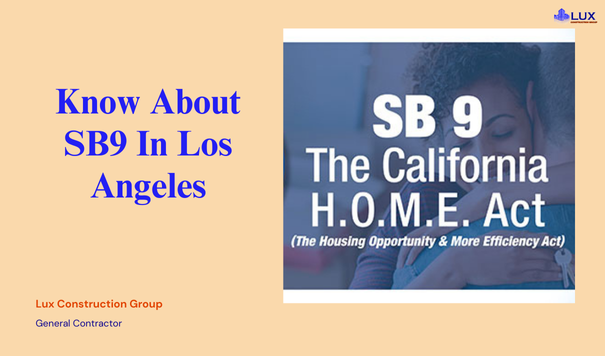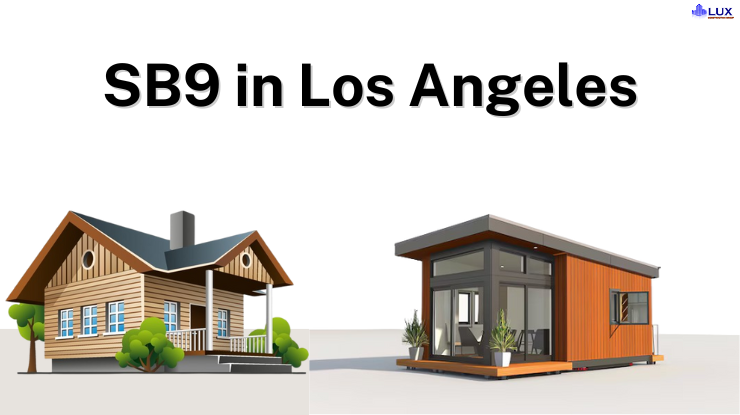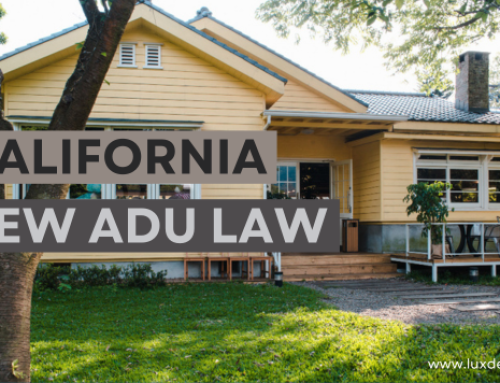Senate Bill 9 (SB9) was signed into law by California’s governor, Gavin Newsom, on January 1, 2022.
On February 14, 2022, several key officials in Los Angeles, including Mayor Eric Garcetti and heads of the Planning, Building and Safety, and Housing departments, also endorsed the bill.
The bill limits local governments’ control over property development in single-family zoning areas.
Let’s know more about SB9 in the following guide!
Contents
- What is SB9 in LA County?
- What are The Key Water and Power Requirements for Building a Home or ADU on a Split Urban Lot?
- What are the Los Angeles Fire Department (LAFD) Requirements?
- Am I Eligible to Build Multiple Units Under SB9 on My Property?
- Are Property Owners in Coastal Zones Eligible for SB9 Permits?
- What are the Other Factors to Consider for SB9 Projects Proposed on RSO-Occupied Properties?
- In Earthquake Fault Zones That Have Been Delineated, Can SB9 Developments Be Permitted?
What is SB9 in LA County?
Senate Bill 9 (SB9), also known as the California Housing Opportunity and More Efficiency (HOME) Act, aims to address the housing and homelessness crisis in California, particularly in Los Angeles.
It was signed into law by Governor Gavin Christopher Newsom on September 16, 2021, and took effect on January 1, 2022. In simple words, SB9 offers Californians a great opportunity to build affordable housing on their properties.
It aims to ease the affordable housing crisis by removing certain land use and environmental restrictions, thereby increasing housing density and simplifying the development of multi-family housing across the state.
This bill allows property owners to divide their single-family lots to create space for duplexes or new accessory dwelling units (ADUs) and junior ADUs (JADUs).
The biggest advantage of SB9 is that it allows homeowners with a single-family zoned lot to split their lot and build two main homes. Before SB9, homeowners could only build one home, one ADU, and one JADU.
Now, thanks to SB9, they can build two main homes, two ADUs, and two JADUs on the same lot. This change will significantly increase the number of homes in Los Angeles and throughout California.
With SB9, California becomes the second state in the US, after Oregon in 2019, to ban single-family home-only zoning in most areas.
What are The Key Water and Power Requirements for Building a Home or ADU on a Split Urban Lot?
When you split an urban lot, you don’t initially need to worry about power or water supply. However, you will need to arrange for these utilities when building new homes on the newly created lot. Homeowners might have to cover some or all of the costs for any necessary equipment upgrades, depending on the additional load required and the existing infrastructure in the area.
On single-family lots with multiple dwelling units, separate water and electricity services aren’t allowed. But if the lot is split under SB9, each new lot will need its own separate water and power services.
If you plan to develop or change the use of land within an LADWP public utility easement or within 10 feet of poles or equipment, you must get approval from LADWP. You might also need to record certain documents with the LA County Recorder’s office before setting up the new water service.
Urban lot splits offer new homeownership opportunities, especially for those priced out of the market due to high costs. SB9 lets some homeowners live with elderly relatives or adult children in a multigenerational home. For renters, each new long-term rental unit helps reduce demand.
Single-family zoning, which restricts lots to one house each, is a major obstacle to new housing. In California, single-family homes make up over 66% of all housing, and nearly 75% of all buildable land is zoned for single-family use. This limits the types of homes that can be built and pushes population growth further out.
Homeowners have two main options for adding another unit:
- Build two units on the same property, which could mean dividing an existing home into two separate units.
- Split a single parcel into two independent parcels.
What are the Los Angeles Fire Department (LAFD) Requirements?
The LAFD Hydrants and Access Unit needs to review and approve plans for single-family homes and two-unit developments. They will check for the following standards:
- Street or fire lane access within 150 feet of any residential unit.
- Roof access with a maximum height to the top plate of 28 feet.
- Adequate fire hydrants within 300 feet.
Additional requirements might include fire lanes and turnarounds, public or private fire hydrants, enhanced construction standards, or sprinkler systems.
An ADU (Accessory Dwelling Unit) is a separate housing structure on the same property as the main house. A JADU (Junior Accessory Dwelling Unit) is a smaller unit, up to 500 square feet, within the walls of an existing or proposed single-family home.
For example, consider Tom, who buys a home in an R1 or OP1 zoning area and gets approval under SB9. He can build an additional home on his lot, along with an ADU and a JADU for each home. This allows Tom to live in one home and have two ADUs, two JADUs, and an additional home to rent out, helping him achieve financial freedom.
Am I Eligible to Build Multiple Units Under SB9 on My Property?
No, SB9 only applies to properties in single-family residential zones. If your property already has a multifamily unit, you may be eligible to add multiple ADUs (Accessory Dwelling Units) instead.
ADUs can significantly increase the value of your home, often adding $150,000 or more. They also provide a source of rental income that can help pay off your mortgage.
SB9 is available only for properties in R1 and OP1 zoning areas. Properties that cannot apply for SB9 include those:
- Located in hazard zones such as earthquake faults, flood zones, or conservation land.
- Located in historic districts or designated as historic resources.
- Containing existing price-controlled units, such as those with deed restrictions or rent control.
- Removed from the Ellis Act within the past 15 years.
- Where more than 25% of the existing structure’s walls need to be removed.
Additionally, rent-controlled, moderate, low, or very low-income housing cannot be altered or demolished under SB9. Units occupied by tenants in the last three years are also protected from modification or demolition.
SB9 aims to promote urban housing growth while protecting vulnerable populations and natural areas. To be eligible, your property must be in an urban area and zoned for single-family use, and it cannot be in a historic district, floodplain, fire hazard region, valuable agricultural land, or other environmentally sensitive areas.
Are Property Owners in Coastal Zones Eligible for SB9 Permits?
Yes, a property owners in Coastal Zones are eligible for SB9 permits.
SB9 does not modify or decrease the effectiveness of the California Coastal Act or the current Coastal Development Permit procedures.
According to the Los Angeles Municipal Code (LAMC), public hearings are still required for any demolition, conversion, new construction, or Urban Lot Split.
Additionally, applicants must still apply for Coastal Development permits.
What are the Other Factors to Consider for SB9 Projects Proposed on RSO-Occupied Properties?
There are additional factors to consider.
If an SB9 project on a Rent Stabilization Ordinance (RSO) property reduces tenants’ access to open space, parking, storage, laundry facilities, living space, or other amenities, the tenants may be eligible for a rent reduction.
The RSO requires a rent decrease based on the cost of replacing the lost service, along with written notification to the tenant when any housing service provided at the start of the tenancy is terminated.
In Earthquake Fault Zones That Have Been Delineated, Can SB9 Developments Be Permitted?
Yes, SB9 projects are allowed in delineated earthquake fault zones as determined by the State Geologist, as long as they follow the seismic protection building code standards set by the California Building Standards Commission.
LUX Construction Group specializes in building ADUs (Accessory Dwelling Units) and has extensive experience in this field. Building an ADU with us can boost your monthly income through a hassle-free and organized process.
Don’t wait—call today to take a step towards financial freedom. Initial consultations and quotes are completely free. To learn more about Los Angeles ADU laws, reach us today!







